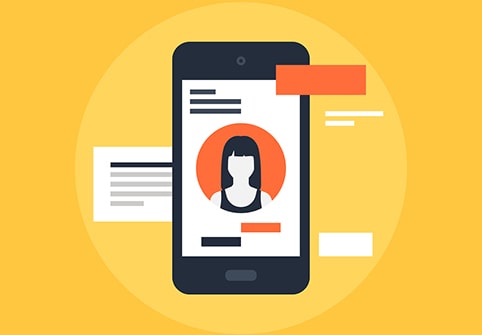Every Student Should Have A Digital Portfolio

Every student should have a collection of personal bests–a cloud-based story of their development and artifacts of accomplishment that’s easily shareable in full or in part and organized for presentation.
At their most basic level portfolios can simply be a storage strategy. They can also be an active work, collaboration and reflection space including a blog and feedback from teachers and peers. Active use cultivates habits of lifelong learning by promoting reflection on what to learn and how to learn. The third level of use is portfolio as showcase around a set of learning outcomes–an achievement documentation system–such as high school graduation.
Development of a digital portfolio is at the heart of a college and career readiness program at Grandview High School, which is located in Central Washington’s wine country. The portfolio process is supported through an advisory system in which students explore career interests, monitor academics, and practice habits of success. Grandview has been recognized for its leadership in developing this program as part of a multi-year College Spark Washington grant initiative. Ultimately, each student’s portfolio feeds a a senior project and is shared during a community panel presentation in which students tell the story of who they are, where they are headed, and how they will get there.
Following are eight tools that schools are using to promote deeper learning by encouraging students to build a collection of personal bests.
- Google Drive portfolios. With more than 40 million active users of Google Apps For Education, there are likely thousands of schools making use of Google Drive for student portfolios. Students can create work in Google Docs, save it in Drive, and create a showcase portfolio using Google Sites (see Google Sites as a Tool for Student Portfolios and Kern Kelley videos; also see how Voyager Academy uses Drive for portfolios.)
- Linkedin. Students 13 and over can use LinkedIn to create a professional presence online, showcasing their work, building out a network of people working in career areas of interest, and finding internships. LinkedIn is becoming a powerful tool to help students navigate their path from high school to college to career.
- eduClipper. While focused on building community and content, Adam Bellow and the eduClipper team haven’t neglected the portfolio uses. Both students and educators can create portfolios on eduClipper. An August portfolio update will allow students and teachers to create walkthroughs of their portfolios with audio narration from the creator. WeLearnedIt (the sister app to eduClipper) serves as a PBL platform for iPad. It has a robust digital learning portfolios feature including video and audio in addition to text. Content can be imported from Google Drive, Dropbox, the Web, any Microsoft Office file, PDF, and most embed code (YouTube, Vimeo, Prezi, etc.) and animated gifs. The apps both feature a great whiteboard video creation tool that is perfect for annotating over images with text, audio, and more–a user favorite for capturing and highlighting work. Collaborative portfolios allow more than one person to contribute content. Parents can see learning reports that showcase student work. (See feature.)
- Three Ring. Committed to the idea that student work is the most important indicator of what students know, Three Ring allows students and teachers to capture evidence live from any mobile device with unlimited storage of video, pictures, and documents. Work can be viewed by student, class, date, or standard.
- Pathbrite. Primarily a HigherEd tool, Pathbrite is used by students on more than 1,000 campuses through an integration with Cengage Learning’s MindTap platform. Pathbrite enables users to tailor their stories of mastery for various employers and admissions officers. Cengage and ACT are investors. (See feature)
- Seesaw. Empowering students as young as five to independently create and organize their work in a digital journal, Seesaw helps kids develop their academic voice, and collaborate with classmates.
- Exibi. Edvation CEO Adam Smith is excited about their new portfolio and project publishing tool Exibi. “Our mission is to help differently talented kids show what they know and can do. It’s based on the work of Dr. Helen Barrett with a private workspace and public showcase,” said Adam. After organizing learning artifacts, students ‘make claims’ explaining how their artifacts demonstrate particular competencies.
- GoEnnounce. A portfolio with social media and crowdsource funding features, GoEnnounce allows students to add followers and share updates with friends.
A growing number of schools and universities are encouraging learners to create a domain and a digital portfolio. The University of Mary Washington in Fredericksburg, Virginia provides its faculty and 5,000 students with a domain to, “Explore the creation and development of their digital identities.” The Domain of One’s Own initiative facilitates WordPress installation, provides technical support, and hosts the site until graduation–and then the domain and content remains the student’s. A domain and a portfolio are great ways to encourage deeper learning and quality work products.
As evidenced at Grandview High and in thousands of other schools, well-designed learner portfolios provide students an opportunity to chart their growth and tell their story.
For more, see:







curis
nioce